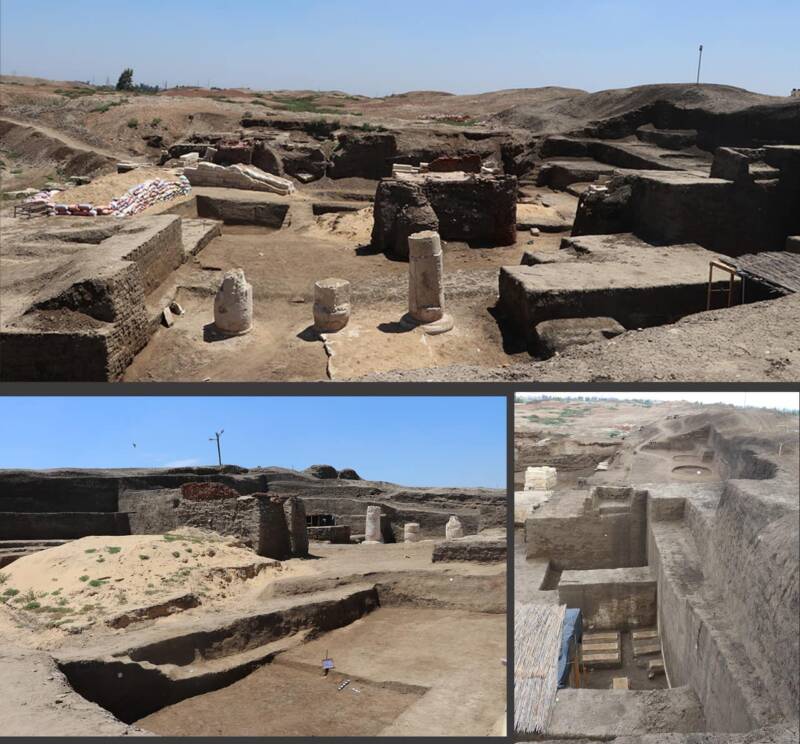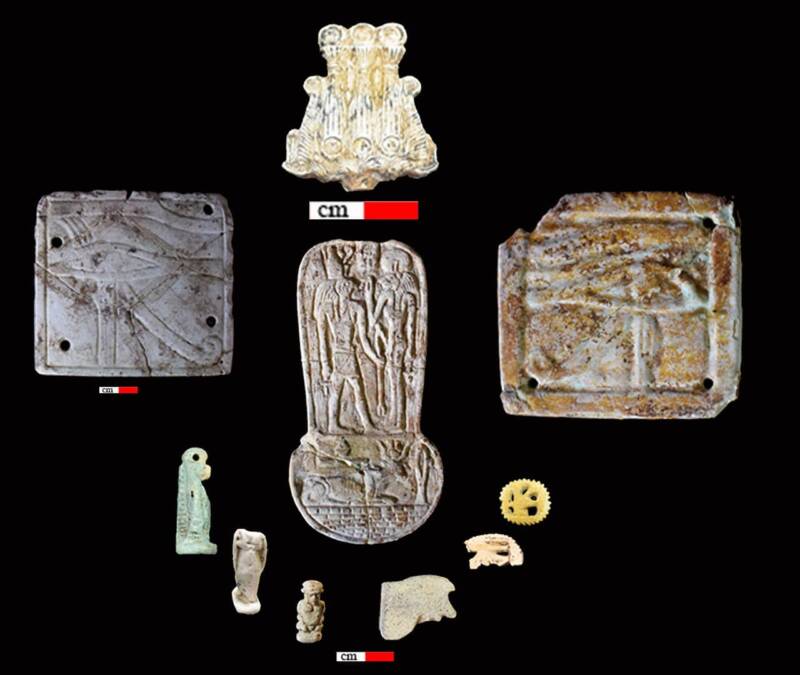The observatory dates back to the sixth century B.C.E. and "confirms the ingenuity and skill of the ancient Egyptians in astronomy since ancient times."

Ministry of Tourism and Antiquities وزارة السياحة والآثارThe ruins of the sixth-century B.C.E. observatory.
More than 2,500 years ago, ancient Egyptians peered up at the heavens. They weren’t just stargazers — they were studying the skies with a keen, questioning eye. Now, new evidence of their attempts to understand the solar system has been unearthed in Egypt’s Kafr El-Sheikh Governorate in the form of an observatory from the sixth century B.C.E.
The astronomical observatory, though in ruins, is the largest ever discovered in Egypt. It contains tools that ancient people used to record what they saw in the sky, from a shadow clock to engravings of seasonal sunrises and sunsets.
The 2,500-Year-Old Observatory In Kafr El-Sheikh
According to a statement from the Egyptian Ministry of Tourism and Antiquities, the sprawling observatory from the sixth century B.C.E. was discovered at the Temple of Buto in Kafr El-Sheikh. Made of mud brick, the observatory is located in the southwest corner of the temple and has a total area of about 850 square meters (roughly 2,800 square feet).

Ministry of Tourism and Antiquities وزارة السياحة والآثارAnother view of the observatory ruins in Kafr El Sheikh.
The building has an entrance facing east, where the sun rises, an L-shaped hall of central columns, a huge outer wall made of mud brick that leans inward, and the remains of a limestone astronomy tower. But the most exciting finds from the observatory were the ancient astronomical tools which archaeologists discovered inside.
The Astronomical Tools Used By Ancient Egyptians In Kafr El-Sheikh
While excavating the ancient observatory, archaeologists documented a number of tools used by ancient Egyptians who sought to understand the sun and stars.
One of the most exciting discoveries is a rare slanted stone sundial called a “shadow clock.” According to the Ministry of Tourism and Antiquities, it “is considered to be one of the most prominent timekeeping instruments in ancient times.”
This “clock” consisted of limestone slabs about 15 feet long, topped with five limestone blocks (three vertical and two horizontal) which archaeologists believe were once marked with lines to measure the sun’s shadows as it moved across the sky during the day.

Ministry of Tourism and Antiquities وزارة السياحة والآثارIn addition to the shadow clock and other measuring tools, archaeologists also found a number of fascinating artifacts at the observatory site.
Archaeologists also found a large stone block in a circular room with two other stone blocks fixed to the north and the west, which were similarly used to track the sun. They also documented a stone platform which showed astronomical scenes of the sunrise and sunset during the three seasons that ancient Egyptians observed throughout the year.
In addition, archaeologists found scenes depicting “the head of the falcon Horus and the Eye of Udjat, which embodies the systems of the universe and is linked to the sun, the moon, the god Horus, and the goddess Wadjet, the most important gods of Buto.”
‘The Ingenuity And Skill Of The Ancient Egyptians’
The discovery of the observatory is yet another confirmation of ancient Egyptians’ curiosity about the world, and how they sought answers.
The discovery “confirms the ingenuity and skill of the ancient Egyptians in astronomy since ancient times, and how to determine the solar calendar and the dates of religious and official rituals such as the coronation of kings and the agricultural year,” Mohamed Ismail Khaled, Secretary-General of the Supreme Council of Antiquities, said in the statement.

Ministry of Tourism and Antiquities وزارة السياحة والآثارMore artifacts found at the site.
He added that the discovery also sheds light on astronomical techniques used by ancient Egyptians — even with simple tools — and enhances our understanding of how science and astronomy developed in ancient times.
As such, the observatory found in Egypt is not just a thrilling archaeological discovery. It’s also a peek at the past, and a glimpse at how ancient Egyptians worked to understand the world around them.
After reading about the observatory from the sixth century B.C.E. that was uncovered in Egypt, go inside the curious question of who built Egypt’s famous pyramids. Or, see why the location of Cleopatra’s tomb continues to evade archaeologists.





